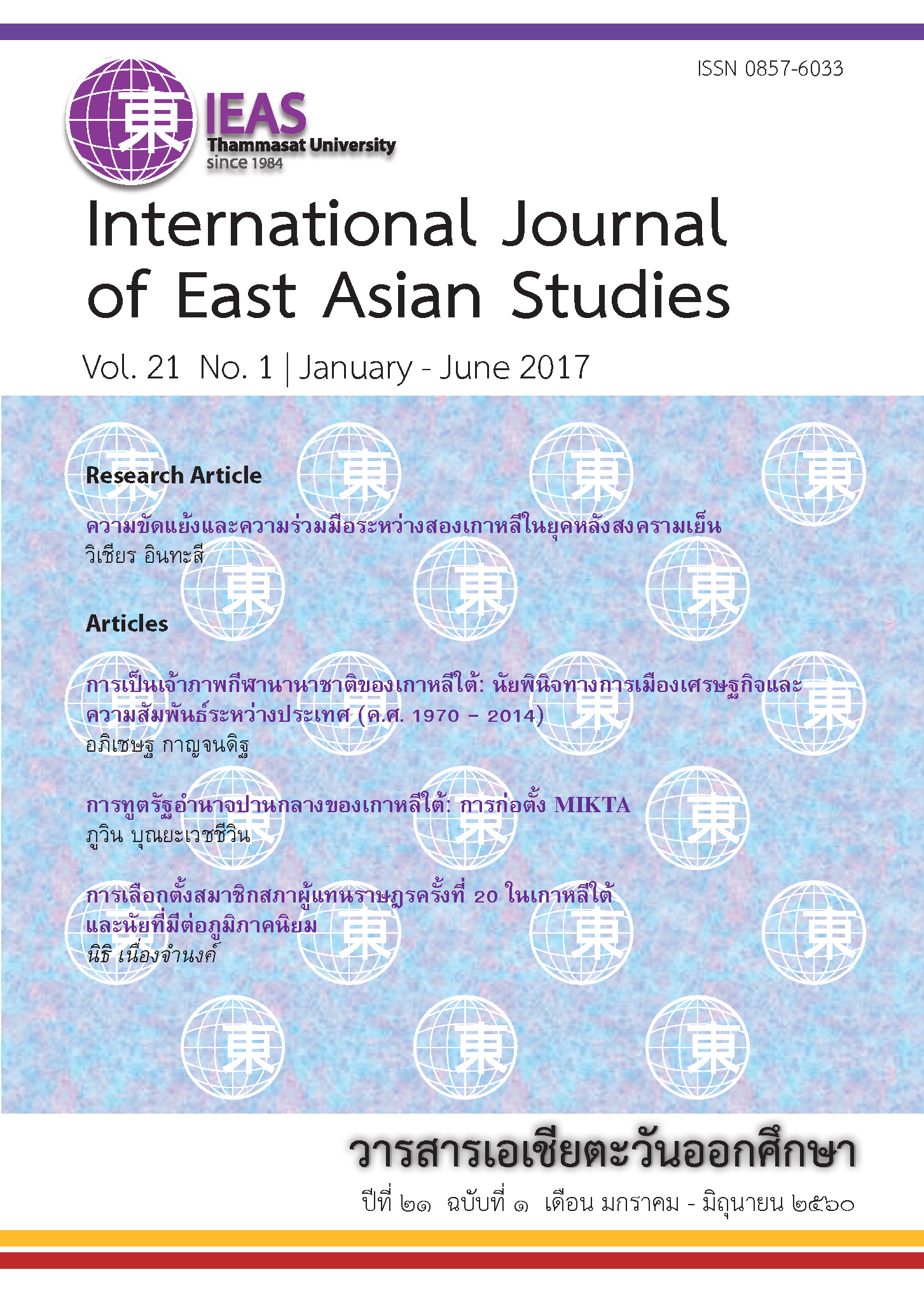การเลือกตั้งสมาชิกสภาผู้แทนราษฎรครั้งที่ 20 ในเกาหลีใต้ และนัยที่มีต่อภูมิภาคนิยม
Abstract
This article explores the dynamism of electoral cleavages in South Korea. It has long been argued that after transition to democracy in 1987, regionalism has been persistent as the most dominant factors in elections. By analyzing the 20th National Assembly election, however, this study reveals both changes and continuities in South Korea’s electoral cleavages. While regional division between Yeongnam and Honam was still powerful particularly in the single-member districts system, in the proportional representation, the emerging cleavages of generation and ideology were as equally influential as regionalism. The younger generation tends to become more centrist and it therefore contributes to weakened influence of regionalism. All of this seems to suggest that South Korean politics is experiencing a structural change in its socio-political landscape.
บทความชิ้นนี้ทำการสำรวจพลวัตในเส้นแบ่งของการเลือกตั้งในเกาหลีใต้ ที่ผ่านมามักจะมีการตั้งข้อถกเถียงว่าหลังจากเปลี่ยนสู่ประชาธิปไตยในปี ค.ศ. 1987 ภูมิภาคนิยมนับว่าเป็นปัจจัยที่มีความสำคัญที่สุดในการเลือกตั้ง อย่างไรก็ตาม จากการวิเคราะห์การเลือกตั้งสมาชิกสภาผู้แทนราษฎรครั้งที่ 20 งานชิ้นนี้จะเผยให้เห็นทั้งแง่มุมของความเปลี่ยนแปลงและความต่อเนื่องในเส้นแบ่งของการเลือกตั้งของเกาหลีใต้ ขณะที่เส้นแบ่งระหว่างภูมิภาคยองนัมและโฮนัมยังคงมีอิทธิพลอย่างมาก โดยเฉพาะในระบบการเลือกตั้งแบบเขต ในระบบการเลือกตั้งแบบสัดส่วน เส้นแบ่งที่กำลังก่อตัวขึ้นบนฐานของรุ่นและอุดมการณ์กลับมีอิทธิพลเทียบเท่ากับภูมิภาคนิยมจากการที่คนรุ่นใหม่มีแนวโน้มที่จะมีแนวอุดมการณ์ที่ค่อนไปทางตรงกลางมากกว่า สิ่งนี้ส่งผลตามมาต่อการลดอิทธิพลของภูมิภาคนิยม ทั้งหมดนี้ดูจะแสดงให้เห็นว่าการเมืองเกาหลีใต้กำลังเผชิญกับการเปลี่ยนแปลงในเชิงโครงสร้างในภูมิทัศน์ทางสังคมการเมือง



